Visitor Management Signage
This toolkit has been created to assist land managers in creating signs and using consistent messaging across the Park.
Signs are a simple and effective method of communication between the people who manage land and those who take access on it. They can provide a welcome, while also having a significant role in helping everyone take access responsibly and land managers to carry out operations safely.
‘Advisory’ signs provide information about factors affecting access e.g. land management operations such as diversions for tree felling or stalking, or guidance on responsible behaviours e.g. keeping dogs under control.
- Signs should be used as and when necessary, it is important to take signs down when any key time or operation has finished – they are more effective when used this way.
- Carefully consider the need for signage – badly worded signs, old redundant signs and an overabundance of signs can all do more harm than good.
The right message 
In order to help the public do the right thing and behave responsibly we need to provide a clear, consistent message across the National Park. The wording and tone of the signs also must not deter or intimidate people from exercising their access rights.
To help with this we’ve provided some guidance and suggested wording that can be used on signs for different topics under the clickable headings below. If in doubt, please contact the Outdoor Access team who can advise if the proposed signs are compliant with the Scottish Outdoor Access Code, (SOAC).
Email: [email protected]
Here are some suggested phrases that you may wish to use;
Livestock grazing:
- “Livestock ahead – please keep your dog on short a lead or close at heel.”
- “Livestock grazing on hill land – keep your dog in sight and under control – if in doubt use a lead.”
Young animals:
- “Lambs in field – dog walkers please use alternative route through field to left.”
- “Sheep are lambing in this field. Please follow another route that avoids this field if possible, and do not take dogs into this field. Thank you.”
- “This field is being used for young farm animals. Parent animals can be aggressive when protecting their young. Please follow another route that avoids this field if possible, and do not take dogs into this field. Thank you.”
If possible also include a short description of an alternative route and a directional arrow e.g. “follow path through the wood”, this is really helpful and helps access takers to go where you’d prefer them to.
If a field is crossed by a well-used path trying to avoid using this field for young animals (especially if there is no alternative route) is always a preferable option to help dog walkers behave responsibly.
In context of the Scottish Outdoor Access Code (the Code)
People have the right to bring their dog with them on visits to the countryside, as long as the dog is “under proper control”.
The Code says that:
- Dogs should not be taken into fields with lambs, calves or other young animals – this is why in these circumstances signs can say “do not take dogs into this field”, but this is the only occasion when this can be done, and should always try to be kept to a minimum.
- Dogs should be kept on a short short lead or under close control around livestock – the Code defines ‘a short lead’ as being 2m and ‘under close control’ as the dog “being able to respond to commands and is kept close at heel”.
- Dog walkers are advised where possible to choose routes that avoid taking dogs into fields with livestock but if this is unavoidable to keep as far as possible from animals and keep dogs on a short lead or under close control.
It is important to communicate clearly with recreational users about stalking. As a land manager it is your responsibility to provide information where needed, this can be:
- Online – using the Heading for the Scottish Hills service. Providing pre-arrival information is helpful as it allows walkers to plan ahead taking into account stalking activity.
- Onsite – using signs and information boards. Signs can easily seem officious and careful wording is needed to encourage walkers to comply with your request, especially as there is usually an absence of any visible evidence that stalking is underway.
Daily information is usually required which can be provided by specific signs, recorded phone messages or daily updates on an estate website. This is of more value to users and it is clear that the request is valid and therefore much more likely to encourage a positive response from walkers.
Specific request signs
Stalking can pose a serious and less obvious hazard to the public and in these circumstances if it is a reasonable and practicable request, you can ask people to avoid using a particular route or area. Any such requests need to be for the minimum area and duration required to safeguard people’s safety. If at all possible, the specified areas should not include popular paths through glens or to major summits.
- Tell people where and when stalking is taking place – this should relate to specific days and apply to the minimum necessary area.
- Requests to avoid a specific area should include suggested alternative routes. These should be of a similar nature and normally start from the same location, or close by. A map is helpful.
- Walkers have a responsibility to respect any reasonable requests to avoid particular areas – this is most likely to happen if the request is clear and sympathetic to walkers’ aspirations.
- Signs which effectively prevent access to major summits (e.g. Munros or Corbetts) or make general requests to avoid higher ground are not appropriate and unlikely to be effective.
- Walkers cannot be asked to avoid using Rights of Way.
Suggested text:
Welcome to xxx Estate
Deer stalking will be taking place on (insert date) in the following area (describe or include map)
Taking the following route will help to minimise disturbance (insert route description/map)
Thank you for your co-operation
(insert contact details)
Welcome to xxx Estate
When todays date is indicated in this box (space to insert dates) deer stalking will be taking place in the following corries (insert description)
Taking the following route to Beinn X will help minimise disturbance and avoid stalking areas (insert route description/map)
Thank you for your co-operation
(insert contact details)
General stalking signs
If it is not possible to suggest an alternative route then signs should provide general guidance encouraging hillwalkers to make informed decisions, however as these messages are general in nature and the signs used longer-term they have limited effectiveness. These signs would be sited in locations such as car parks and key access points to popular routes/hills.
- Suggest ways walkers could help e.g. using paths, following ridges or watercourses. N.B. walkers may need to take unplanned, enforced detours and may not always be able to comply with these requests.
- If applicable, highlight routes to the summits which are never affected by stalking:
“The route to Ben X from Y is always okay to use”. - Provide as much detail as possible about the stalking season – the date stalking will start and end, noting any days of the week on which stalking does not take place.
- Include estate contact details or a phone number to a recorded message for up to date information.
- Signs should be welcoming and use friendly, reasonable language and should not discourage access by implying a hazard to walkers.
Suggested wording:
Welcome to xxx Estate
Deer stalking takes place on this estate to keep deer numbers in balance with the environment and for economic benefits.
Stalking will be taking place on some days between (insert start date) and (insert end date) in (indicate general area).
When stalking is taking place you can help by:
– using paths
– following ridges
– following the main watercourse if you have to go through a corrie
There is no stalking on Sundays.
Thank you for your co-operation
(Add contact details)
“Use standard signs for health and safety issues”
Tips for creating signage
You can put up a sign, but that doesn’t guarantee that anyone will read it! Here are some helpful tips for creating successful signage:
-
- People respond best to positive, helpful information and this is nearly always more effective than negative “no go” type signs.
- Signs need to be simple, clear, concise and specific. Stick to one message.
- Use easy to understand, straightforward language.
- Keep words to a minimum, a picture, symbol or cartoon is often more effective.
- Explain why you are asking for certain behaviours.
- Make sure the sign clearly explains where and for how long the behaviour is being requested.
- State who the author of the sign is – and preferably provide contact details.
- Remove a sign when it is no longer required, for example if calves have been moved to another field.
Ensure that your sign is compliant with the Scottish Outdoor Access Code – if in doubt please contact the Outdoor Access team for advice. Email us at [email protected]
Resources and downloads
Outdoor Access poster signs
These signs have been produced on a variety of topics and can be downloaded as jpgs or pdfs for your own printing. Versions of the jpgs are available with a blank top section should you wish to add your own logo/estate name etc. To download: click on the link, right-click on the image and save the image.
Alternatively, we can supply hard copies printed on dibond* for outdoor use – we may have these in stock or may need to order them.
(*aluminium composite)
If you require hard copies or any assistance adding logos, please email us on: [email protected]
Where to use
These types of ‘poster’ signs are most appropriate for point of arrival locations – e.g. car parks, and on notice boards or at visitor centres etc.
 Take the lead around livestock
Take the lead around livestock
dog livestock (logo space) – jpg
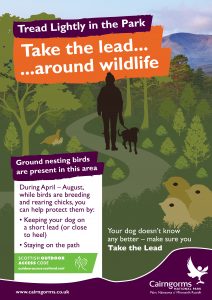 Take the lead around wildlife
Take the lead around wildlife
dog wildlife (logo space) – jpg
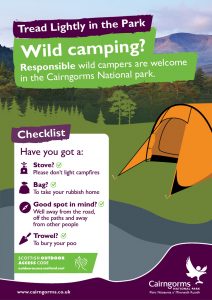 Wild camping
Wild camping
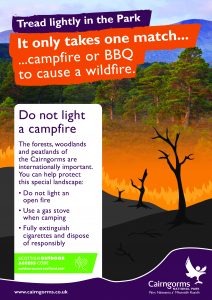 Wildfire / Do not light a campfire
Wildfire / Do not light a campfire
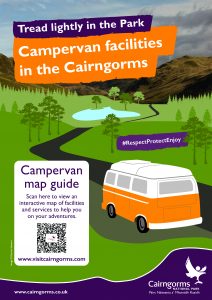 Campervan leaflet
Campervan leaflet
The campervan poster is also available as a printed A3 or A4 paper poster
Social Media resources
The below resources have been produced specifically for use on social media channels.
SOAC – NatureScot resources
A series of 23 images to promote responsible behaviour including: dog walking, camping, wildlife disturbance, leave no trace, sharing spaces, SOAC etc.
News & Announcements
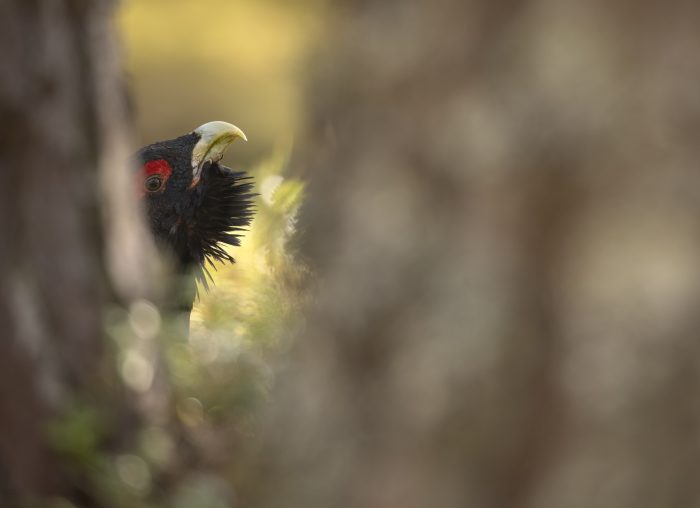
02/04/2024
Outdoor Access
Birdwatchers, photographers and wildlife guides thanked for leaving capercaillie in peace this spring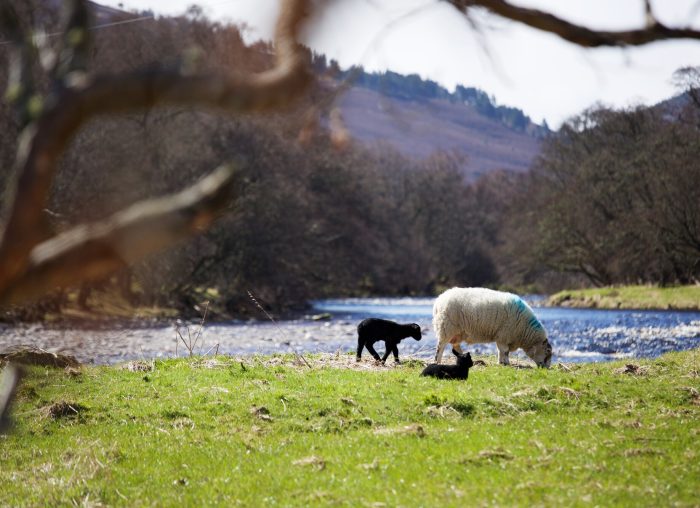
29/03/2024
Outdoor Access
When it comes to your dog and livestock – do the right thing this spring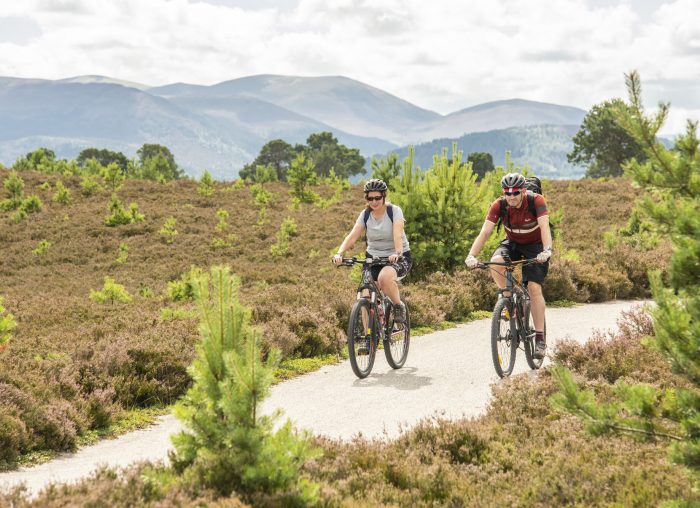
17/02/2023
Outdoor Access
Making the Park more walking, cycling and wheelchair friendly
